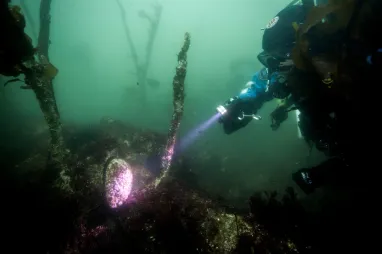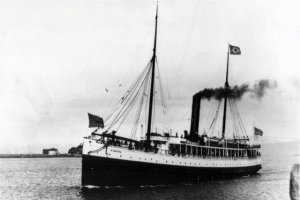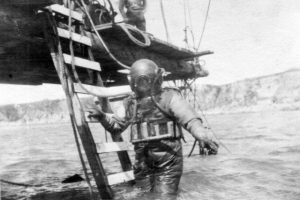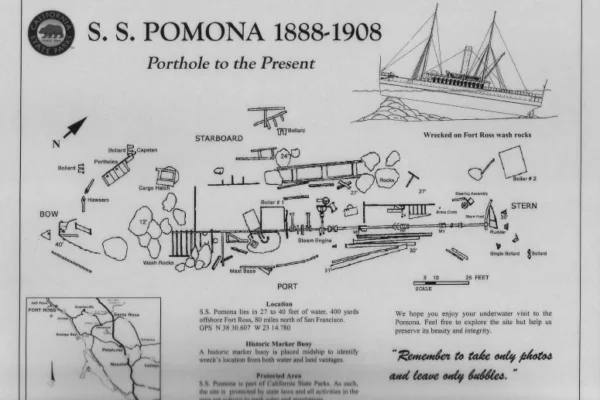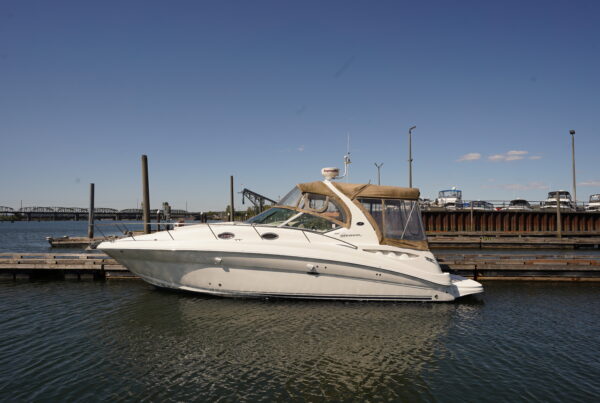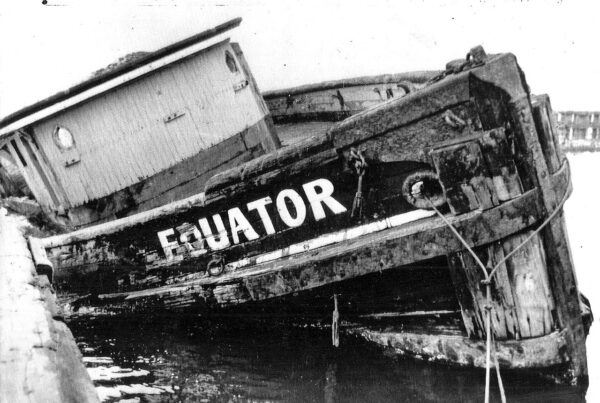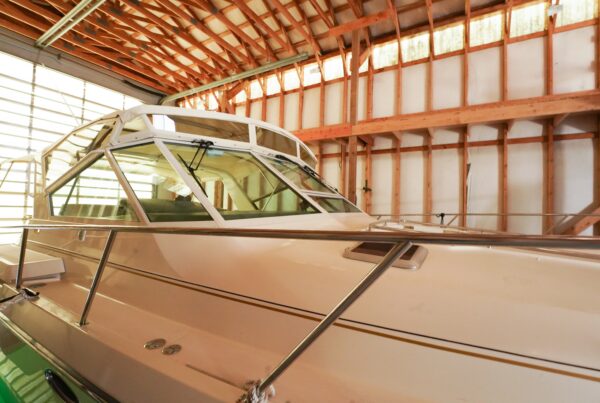My story Begins...
I feel that it’s time that I share the history of the S.S. Pomona… It’s my story, who better to tell it?
I am the S.S. Pomona but you can call me Propeller Pomona. I was designed by Irving M Scott, Jr. an architect who designed many ships for the Union Iron Works.
I have a vertical stempost at the bow, a rounded elliptical stern, and three decks; one for cargo, a main deck, and then a lighter, partial hurricane deck. Also, I was built of steel, which was unusual for the time!
I was launched in the summer of 1888 by the Union Iron Works boatyard in San Francisco, California. I was one of 59 boats built that year. I was 225 feet long, 33 feet wide, and weighed 1,264 tons (2.5 million pounds)! I was steam powered by a 1,250 horsepower triple-expansion steam engine and had two masts.
I held first class staterooms on the hurricane deck where passengers would enjoy a social hall finished in hardwoods and a beautiful skylight top. Steerage, or more common folk, had space on the main deck where there were 27 berths for men on the port side and 12 berths for women on the starboard side.
My crew lived in three rooms in the hull, the majority of which were in what was called the “glory hole” or a space filled with as many berths as possible.
I was heated with steam pipes and lighted by 150 electric lights, which were provided by an auxiliary steam engine. This was new for the age and only a select number of large passenger ships were given this level of technology.
Serving the Community
Altogether I could hold 220 passengers and crew! I was designed to carry a large majority of cargo and passengers up and down the Pacific Coast. On average it took me 19.87 hours to go from San Francisco to Vancouver, Washington. At a sustained 15.5 knots of power, I was the fastest steamship on the West Coast!
In 1897 I was sold to the Pacific Coast Steamship Company. This was impressive at the time; due to the rugged and dangerous Pacific coastline most boats from my era (primarily wooden hull coastal steamers) rarely lasted a decade. Somehow, I made it through and was deemed worthy enough to be sold!
I was refitted in 1897 and then went another ten years going up and down the Pacific Coast. I carried people and cargo during a time that transformed California from a boom-time economy to a fully functional economy.
The Beginning of the End...
It was the evening, specifically dusk, on March 17th, 1908 around 6:30pm. I was headed to Eureka Oregon from San Francisco. There were heavy seas north, towards Eureka, but it was a trip that I had done many times before. I was carrying 84 passengers, a crew of 62 men, and 300 tons of merchandise in my hold.
I heard whispers from passengers that night. There was talk that my boilers were malfunctioning and would not hold enough pressure to give my engine the horsepower needed to plow through the swells and winds of the open water. This was likely true, I could feel it in my heart. A man named L.F. Puter put it best stating, “We were so close to shore you could tell the color of a cow on the hillside” and that the “S.S. Pomona could not buck the weather.” There was some truth to this; Captain Swansen had purposely run me close to shore as he was concerned about the rough weather and this would make my passengers uncomfortable and even more seasick.
Now you may or may not know but there are hundreds of submerged rocks and reefs off the coast of Northern California. They were always a dagger that I had tried to avoid since I was launched in 1888. Really the only way that you could distinguish the rocks is through the turbulent surf washing around the rocks, giving them the name of “washrocks.” There was one rock in particular named “Wash Rock” around Monterey California that gave its namesake and a position on charts starting in 1880.
Well, I hit wash rock. And began taking on water, very quickly. Captain Swansen called for full steam and veered the ship toward Fort Ross Cove, hoping to ground me on one of the beaches saving the passengers, crew and cargo. I had no liferafts, as these were not required for sinking ships until after my sister the Titanic sank in 1913. So running me up into the shallows and grounding me on the rocky coast could save lives and potentially revenue.
With 225 feet of length behind me I tried my hardest but couldn’t turn fast enough to make the shallower southeastern beach on Fort Ross Cove. So Captain Swansen instead headed for the northern bowl of the cover where lumber schooners moored to take on cargo and passengers. But while doing so I hit another wash rock, ahh! I could feel it hit my hull, scraping and opening me up even more. Ironically this wash rock was used as a pick-up mooring to pivot vessels into the small cove, but my Captain missed it altogether.
I ran up onto the wash rock and while it opened me up I slowed down enough and became stuck on the rock. My stern settled, making me pivot, swinging completely around with my bow pointing out to the sea. I remember listing heavily to the starboard side, and as I continued to list closer to the water Captain Swansen gave the order to abandon me.
I watched as the lifeboats went back and forth as all of my passengers and crew were removed and sent to shore. Thankfully I remained upright, for the entire evacuation. I’m proud to say that everyone on board, including a parrot and three dogs were safely evacuated. I really pulled through until the very end!
Within days of the incident, divers arrived to salvage as much as they could. I could feel them trying to remove my hull from the wash rock, but I was truly stuck. So, what began as a rescue turned quickly into salvage. Divers took my gear and lines, as well as glassware, utensils, and mattresses. Eventually they found their way to my anchors, propeller, power systems, and one of my boilers.
When the divers had completed their task, new life began exploring the depths of my hull. Various sea life moved in and began to call me home. There were stories written about a “monster devil fish” which were frightening at first, but in reality it was just a large Octopus. It felt good to be useful again.
As a bitter storm swept through on November 21st, 1908 my hull broke apart in the surf. I came apart as my bow broke away and I felt myself being stretched with my bow moving out to sea. Eventually, it came to rest in 40ft of water, with the rest of my hull coming to rest on the shoreward side of the wash rock in 17 ft of water.
The lumber schooners who entered the cove struggled to maneuver around me. I could feel their wake pass by as I sat buried among the rocks underneath. I was barely a memory, laying in pieces for years. During the summers I lay buried in bull kelp, which can grow up to one foot per day. The kelp has helped for decades to mitigate the ocean swell, protecting me from further deterioration. I’ve also become a habitat for all sorts of sealine such as abalone, starfish, anemones, and nudibranchs.
Time Marches On
and the history of the S.S. Pomona, my story, was all but forgotten…
Then, in 1981 the California State Parks did an underwater survey of the cove. They found 55 iron anomalies with my parts and pieces rediscovered after decades of being left alone to my own devices. Over the next fifteen years research teams and universities came out to record my remains and recover objects. And, in time, I became a dive site for recreational divers as well.
For those willing to make the journey, I’m still here. And, who knows? I may have more stories to tell.
Click HERE For more information about the history of the S.S. Pomona!
For more information on all things boating, check out our other articles HERE!

